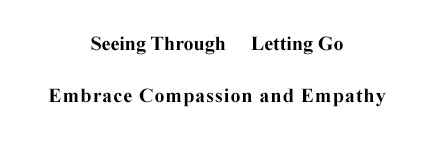In this post, we verify Citta through the enlightenment of our enlightened contemporary, Adyashanti.
Adyashanti is a contemporary enlightened person. Therefore, his enlightenment experience is the most helpful because the language and terms he uses are easy for people of today to understand.
Adyashanti, according to this Wikipedia article, was “born Stephen Gray and is an American spiritual teacher.” “At age 25, Gray claims to have begun experiencing a series of transformative spiritual awakenings. While sitting alone on his cushion, Gray claims to have had a classic kensho, or awakening experience, in which he “penetrated to the emptiness of all things and realized that the Buddha I had been chasing was what I was.” “For the next few years, he continued his meditation practice while also working at his father’s machine shop. In addition to sitting, he spent many hours in coffee shops writing answers to questions that spontaneously came to him. Finally, at 31, Gray had an experience of awakening that put to rest all his questions and doubts.” Today, he is a spiritual teacher through his non-profit organization, Open Gate Sangha.
In this video, Adyashanti Guided Meditation- “What is the Nature of Self?” Adyashanti meditates on the nature of his own self as he asks, “What is this thing called I?”
During the meditation, he found that “the more we look, the less we find.” In the end, he finds the self “elusive” and “it never seems to appear.” Instead, his journey ends in “an ineffable mystery,” “a silence,” “a void!” There is “no entity” and “no somebody.“
Finally, he acknowledged, “You can’t find yourself, and yet, whatever you are, it’s obviously here!” Ultimately, his journey in search of his nature of beings ends in a “complete absence of definitions.”
Indeed, rather than confirming something new, Adyashanti’s descriptions of what he was in, such as “a void,” “a silence,” “no entity,” and “no somebody,” negate everything he used to experience. Not only has the physical universe disappeared, but he could not even experience his physical self!
Thus, Adyashanti’s enlightenment experience confirmed the following Buddha’s teachings:
1) Emptiness, Inconceivability, and Suchness: Emptiness refers to the fact that Citta “is without duality and empirical forms.” Inconceivability refers to the fact that Citta is “beyond all conceptualization.” Suchness refers to the ineffability of Citta: how do you describe something that cannot be seen, heard, smelled, tasted, or touched?”
Indeed, Adyashanti struggled with words to describe his situation. Words like “elusive,” “an ineffable mystery,” and “a complete absence of definitions” suggested that he lacked the words to describe his surroundings. It was a mystery he could not define.
2) Buddha-nature: Adyashanti’s realization “that the Buddha I had been chasing was what I was” is an explicit acknowledgment that the nature to becoming a Buddha is inherent.
3) Two Levels of Enlightenment: That Adyashanti was enlightened twice clearly indicates two enlightenment levels.
4) Parikalpita: the self-nature of the phenomenal universe Buddha deems “imputed,” “imaginary,” or “artificial.”
Confirming parikalpita requires two levels of understanding: negating phenomena and affirming their mental nature.
By confirming that his surroundings are “a void,” “a silence,” “no entity,” and “no somebody,” Adyashanti acknowledged that the phenomena and the people in it all vanished.
By acknowledging “You can’t find yourself, and yet, whatever you are, it’s obviously here,” Adyashanti understood that what was left of him was his awareness that “whatever you are, it’s obviously here.” Furthermore, when he said, “You and your awareness are not two different things,” Adyashanti confirmed that he understood the mental nature of his being.
Indeed, by acknowledging that “you and awareness are not two different things” and “resting in awareness is not a state of doing, it is a state of being,” Adyashanti has found the answer to his question: “What is this thing called I?”
“This thing called I?” is not material but mental. When your material body disappears, the only thing left is your awareness that your material body has disappeared. Calming your consciousness to awareness is the ultimate state of your being. Your physical self is but a changeable manifestation of your mental being, your ultimate being.
Additionally, it must be pointed out that Adyshanti’s use of the word awareness, not consciousness, to acknowledge the ultimate nature of being is exact. In Buddhism, awareness signifies a quiescent mentality, while consciousness only appears when mentality fluctuates, which occurs only in non-luminosity.
Quite obviously, Adyashanti’s knowledge that awareness is his ultimate being could only have come after his enlightenment when his consciousness became one with Citta. The source of his knowledge could only have been from the “experiential content” embedded in Citta.


